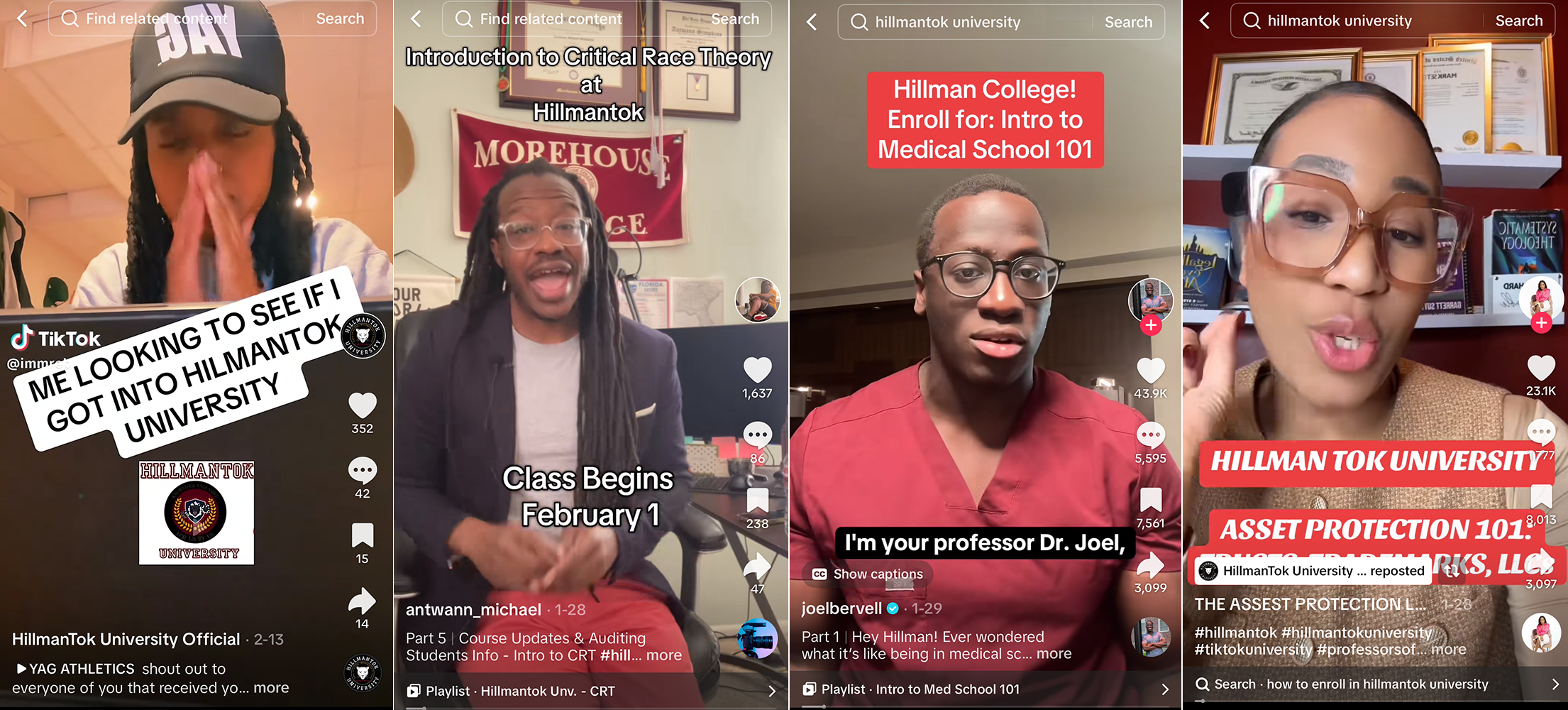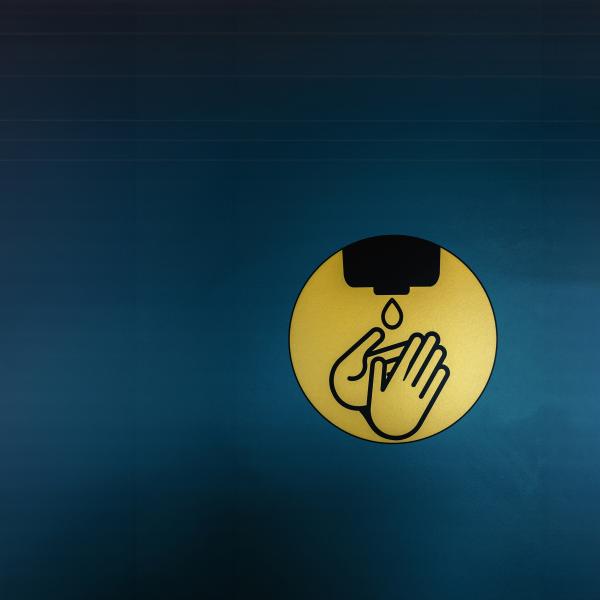Raven Maragh-Lloyd is associate professor of African and African American studies and film and media studies. Her research focuses on Black digital media practices and their connections to power, resistance and longstanding efforts of community building and preservation, as detailed in her most recent book, “Black Networked Resistance: Strategic Rearticulations in the Digital Age.”
“Bear with me, everyone.” That’s the phrase I’ve used for years as I approach fresh new faces on the first day of class when we get to the syllabus portion of the day. I teach Black digital media courses in African and African American studies and film and media studies and even though there are so many pressing cases to choose from to grab students’ intrigue on the first day, I have yet to find an interesting way to present the syllabus itself. It just is what it is.

That’s one of the reasons that I was pleasantly stunned by the “#HillmanTok” series of posts on TikTok. On January 20, 2025, Professor Leah Barlow posted a video introducing her African American studies course at North Carolina A&T State University. The post was meant for her students but then went viral on the platform, with 4.4 million views. Users by the thousands — college and non-college students alike — posted reactions to Dr. Barlow’s videos, eagerly wanting to “enroll” in this course. And with the impatience and ingenuity of Millennials and Gen Zers, HillmanTok was born.
The name, of course, borrows from the Cosby Show spin-off, A Different World (1987–93), wherein Cosby’s daughter, Denise Huxtable, goes to college at, you guessed it, Hillman College. This fictional HBCU (an identifier for historically Black colleges and universities) was a haven for Black students on the show and represented the freedom of young adulthood on a college campus — replete with love, heartbreak, academic growth and more. The background of the name is important, as internet users on TikTok brilliantly conjure a decades-old television show to bring to life Hillman College for themselves. The internet, which is often cast off as “unreal” and “unimportant,” becomes very real and tangible through HillmanTok.
Online, I watched as post after post detailed the “syllabus” of HillmanTok. Users — again, young people not technically enrolled in Dr. Barlow’s class — half-jokingly, half seriously explained the assignments of the course, due dates and even the professor’s temperament: “Professor Barlow don’t play, y’all,” as one user put it. HillmanTok then quickly grew to include a host of topics from Black educators. Posts under the hashtag now range from “Wealth 101,” “Introduction to Critical Race Theory,” “Managing Blood Pressure” and more. All at once, Black users eschewed the common mainstay about TikTok as a platform as being highly specific to the algorithm and anti-collective in its creation of “hyper-niches.” Here, HillmanTok proved that once again Black digital users can and do drive collective narratives. Importantly, HillmanTok began with a humanities course, a Black studies course focused on Black history, and then expanded in areas where we are historically underrepresented (e.g., finances and medicine).

There are two observations I’d like to make about the instance of HillmanTok. First, these posts beg the pressing question: What does it mean for knowledge to be elective? Particularly at a time when higher education is under attack, TikTok users demonstrate that there is no monopoly on education. While the closing of departments and the termination of grants, the latter of which has affected my research personally, are horrific, I take a slice of solace from the next generation, who refuse to wait for debates about critical race theory to be settled. Instead, they consume and circulate knowledge while paying homage and respect to the ones who curate and create that knowledge. Again, in our current political moment, this kind of elective knowledge cannot be overstated.
Our online friends might be urging us to instead consider the enormous reach of our work and the importance of our standards.
Second, as educators, especially in the humanities, we are often pushed toward the importance of public scholarship, an adage I agree with. But we don’t often know where to start. Our research is time consuming, the demands on our intellect and time are plenty, and translating our work — often without much incentive — seems like a sunk cost. But, what HillmanTok shows us is this: Using digital tools to circulate our work does not have to be complicated or extensive. Professor Barlow simply and authentically stated the importance of African American studies and the expectations of her course. No fancy bells and whistles. Again, the current attacks on higher education, the humanities and race and ethnicity courses might tempt educators to retreat. Particularly for precarious faculty and graduate students, this is wholly understandable. But our online friends might be urging us to instead consider the enormous reach of our work and the importance of our standards. Making our work accessible is one way to continue the long legacy of activism and education, which HillmanTok brilliantly exemplifies. Maybe I’ll include the case of HillmanTok the next time I introduce my syllabi. We’ll see how it goes.




